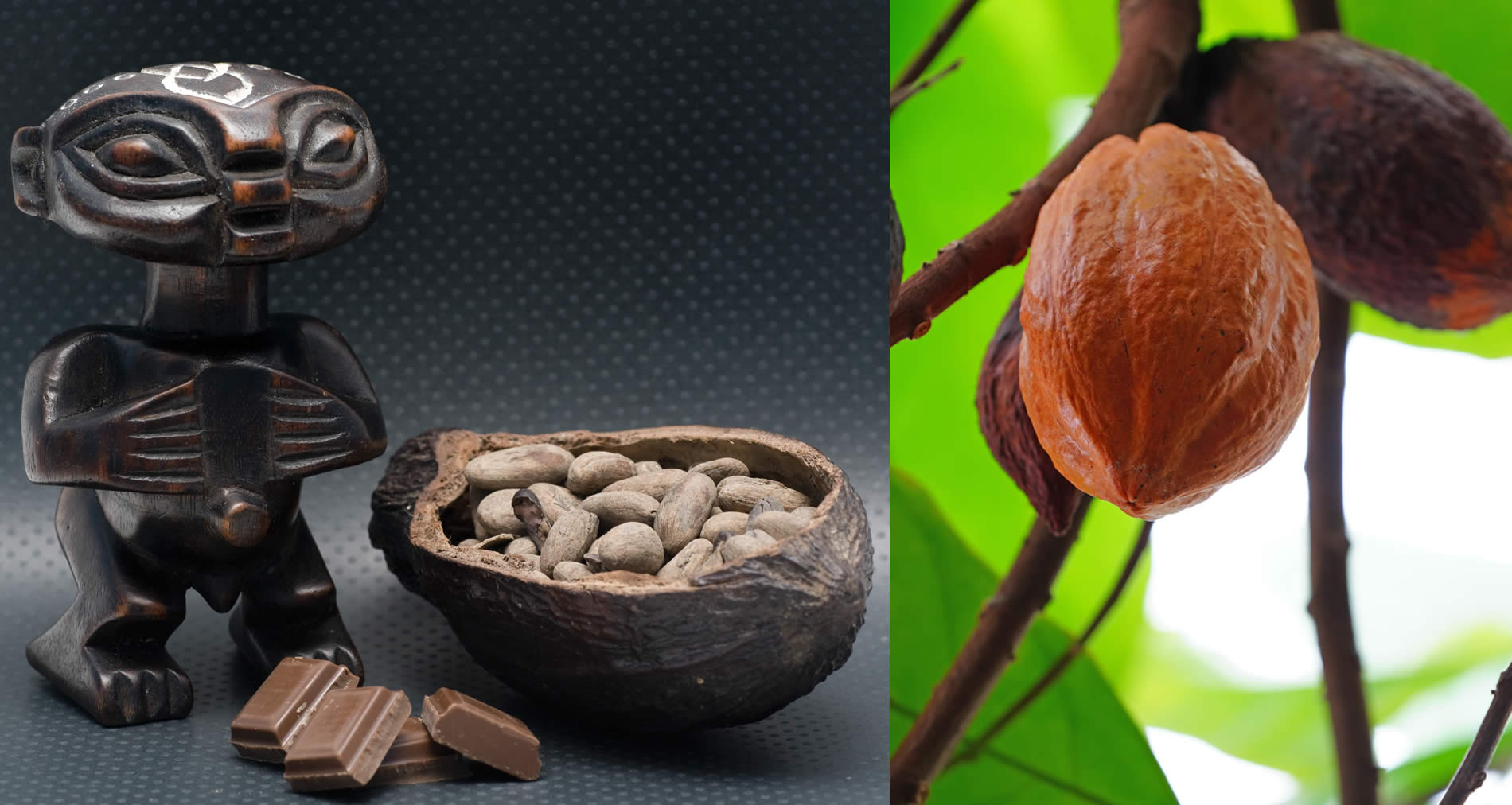
Originally known as Xocoatl, at the height of the Aztec Empire, in the Nahuatl language, which is still in use in several communities over the mexican territory, takes its form from the word xoco, which means bitter or sour, and atl, meaning water. The recipe created by the Aztecs involved the fusion of cacahóatl beans (cocoa) and póchotl (ceiba) in cold or lukewarm water. Another argued and widely accepted version refers to chocolatl, breaking it down into choco, for chocoxtic, referring to its featured brown and yellowish color, instead of the flavor, and then atl, again, for water.
On the other hand, the cocoa tree, is named Theobroma (genus) Cacao (species) L. (initial that pays homage to naturalist Carlos Linneo, who discovered it), meaning “food of the gods”. Its bitter taste would be balanced with sugar by the Spanish-European culture, where it would arrive in the 16th century, and by the end of the 17th century it would take its solid form as candy bars. It is a linguistic heritage that has been preserved as such in many languages.